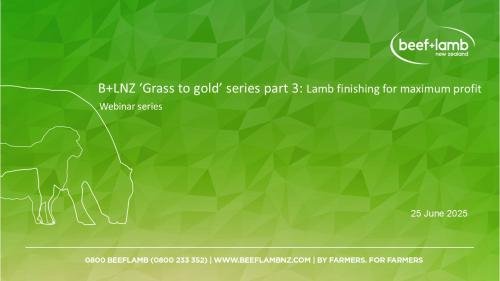Search results
Displaying 91 - 100 results of 1223
- wwwbeeflambnzcom 0800 beef lamb 0800 233 352 farmers farmers action pricing agricultural emissions how write your submission october 2022 need you every farmer get onboard submit governments …
- Factsheet… dryland pastures dryland areas pasture needs grow also last persistence being critical long … 70 dmhaday 7x10 figure 2 decrease proportion sown pasture components dryland ryegrasswhite … cocksfoot pastures maintained 83 originally sown pasture components year 5 had above 60 …
- Resource book… growing great lambs workshop resource book … lnz publication 400 plusa guide improved lamb growth farmers advisors edited peter kerr 2010 … can have many causes scouring failure thrive can caused bacterial stomach infections …
- Industry data… 21 3 overview 4 seasonal conditions 4 lamb growth rates 4 early drafting pattern 4 early … farmers had difficulty early spring sowing due very wet conditions while later sowing further south affected dry soil …
- VideoLamb finishing for maximum profit. Set your system up to take advantage of a strong sheepmeat schedule, with practical, locally tailored strategies from local farm consultant Peter Young. Recorded …
- Resource book… difficult unnecessary seems dont have time grownup version dog ate homework beef lamb new … needs business needs must aligned ensure growth sustainable intuitive flexible examples … overaccumulation debt farming business cannot thrive high debt equity ratio 4 diversity …
- Factsheet… development programme which included growing wheat grassing programme capital … ewe hoggets mated amount cost dap applied sowing assumptions based additional 635 … developed three hectares river flats through sowing diverse pasture species developed …
- Resource bookreference cards beef cow body condition scoring 4 bcs 4 beef cow body condition scoring reference cards refer beef cow body condition sccoring guide more information tailhead rumpshort ribs pin bones …
- News… progeny, others included weaning weights and growth rates, faecal egg counts (FEC), dag …

- Other PDF12 some intensive winter grazing activities permitted however your intensive winter grazing activities breach permitted activity threshold you require resource consent use lnzs factsheet intensive …
